Are you looking for a pelvic floor physiotherapist?
We have a revolutionary and non-invasive solution that will change your life!
A combined treatment of a revolutionary electromagnetic chair that trains and strengthens the pelvic floor muscles + the close accompaniment of a pelvic floor physiotherapist that will save you long months of grueling treatments, in just 6 sessions!
The service is provided at the Pelvic Floor Treatment Center, Tel Hashomer, 4 Gildsagim St., Ramat Gan
A pelvic floor physiotherapist will accompany you throughout the series of treatments
The treatment is non-invasive and takes place fully clothed
The treatment is recognized by Clalit Perfect/insurance companies and they provide reimbursements according to your policy. We will accompany you in receiving the refunds to which you are entitled


היום תורך לשנות את חייך! פגישת ייעוץ מקצועית + טיפול ניסיון עם הרבה ערך For only 149 ₪!

Our Doctors
Dr. Gandhi Bittman

Specialist in General Gynecology, Urgynecology and Pelvic Floor
Dr. Bittman has been an expert in gynecology and urogynecology at Sheba for over 20 years. Performs fistula repair surgeries (the only one in the center of the country that does this using the vaginal method), gynecological surgeries using endoscopic methods (laparoscopy and hysteroscopy), innovative laparoscopic surgeries to correct pelvic organ prolapse, and surgeries to correct urinary leakage.
Our Physiotherapists

Dr. Dana Poudel - Pelvic Floor Physiotherapist
Dr. Dana Poudel is a PhD specialist in physical therapy from Northwestern University Chicago, USA.
Dana has extensive experience in treating pelvic floor problems in women and men, and even combines yoga exercises in the clinic as a holistic treatment for a variety of problems.

Yifat Goldberg - Physiotherapist for pelvic floor rehabilitation
Holds a bachelor's degree in BPT physiotherapy,
She has clinical experience in treating a variety of pelvic floor problems in women and men, orthopedic and vestibular rehabilitation.
How does it work?

1. Schedule a consultation and adjustment meeting, which includes a medical examination by a physiotherapist specializing in pelvic floor + experiential treatment

2. If you are suitable, schedule a series of treatments using the eChair

3. Embark on a new path with strong pelvic floor muscles that prevent annoying urine odors

4. We will accompany you in receiving reimbursements from your health plan / insurance company
Pelvic floor physiotherapist
Many people are used to paying attention to the health of their most prominent and useful organs: if you have pain in your hand, you will not hesitate and immediately contact doctors who can help you solve it; Similar behavior will also accompany you with pain in your leg, back, head and even abdomen. On the other hand, it is not certain that many of you think about your internal organs and their health, and this, ladies and gentlemen, may be a serious mistake that will meet you unexpectedly later in life.
So yes, it's not about being in control of 100% of your body's organs all the time, but you definitely need to keep your finger on the pulse when it comes to your health, even if it's areas you don't really meet on a daily basis or at all. For that matter, your pelvic floor muscles are among the most important muscles in your body, and it is not certain that you are aware of their proper functioning and function.
With the help of a pelvic floor physiotherapist, you can definitely diagnose your condition, and tailor treatment for yourself if necessary. Let's put all the pieces together so that you understand how and why a pelvic floor physiotherapist is so meaningful to your life, and how meeting her can change your life completely.

Background on the pelvic floor and pelvic floor muscles
We will get to the specific and unique role of a pelvic floor physiotherapist later, but before all that – let's get a little more background on the pelvic floor and pelvic floor muscles. So we're actually talking about a group of muscles you've never met, because they're inside your body – in both the women and the men.
On the other hand, even though you have never seen them, you should know that they play a super significant role in your body, on a very daily level – they are the ones responsible for controlling your sphincters. For those of you who are not sure what this means, we will simplify the meaning – without well-maintained and working pelvic floor muscles, you may suffer from urinary incontinence and even fecal incontinence without any possibility of controlling the situation. Terrible, isn't it? Well, this is the daily reality of many people throughout the country in particular, and around the world in general.
Pelvic floor muscles and urinary incontinence – the issue that bothers many percent of the population
So yes, it is impossible to ignore this fact, according to which no less than 30% of the population suffers from urinary incontinence on a daily level and in a variety of different situations. These people suffer from loose and weak pelvic floor muscles, which fail to perform their function properly, and accordingly they are forced to deal with this very less than ideal situation. So how do you deal with it anyway?
Well, this is a super difficult coping that puts these people in situations of frustration, despair and embarrassment every day. Among other things, these people are forced to depend on nearby toilet cubicles, avoid social gatherings due to the fear that they will have incontinence, and even accustom themselves to the use of adult diapers. Yes, it may sound delusional or far-fetched to some of you, but unfortunately this is a reality of tens of thousands of people without you even being aware of it. A pelvic floor physiotherapist is the one who can help solve this issue or at least get into some control, and we will expand on this later.
Ages for urinary incontinence and loosening of the pelvic floor muscles – this can happen at any age and at any given moment
It is very possible that some of you now think that this is only a matter that stems from an older and advanced age, but in practice, it appears that quite a few people out of the 30% of the population who suffer from urinary incontinence are young people, only between the ages of 20 and 40. So where does this whole story come from?
Loosening of the pelvic floor muscles can occur at an early age, due to neglect of their physical fitness, due to a complex medical background that includes various diseases and medical problems, and sometimes even without any defined reason, but simply due to various activities that require some kind of effort. For this very reason, it is important to be open to the option of meetings with a pelvic floor physiotherapist, the treatments she will offer, and the various options that the process can lead to on the way to results.
Types of urinary incontinence and the connection to the pelvic floor muscles
One of the first things a pelvic floor physiotherapist will want to do is to diagnose the type of urinary incontinence, in order to tailor appropriate treatment. If earlier we saw that this is not only a matter of advanced age, but also a matter of medical conditions or strenuous activity, now we can classify them a little more accurately.
So here are the three types of urinary incontinence that you should know:
1. Urgeal incontinence
Do you know that feeling that you have to evacuate, and that the urine is about to burst out of you uncontrollably? Well, many people who feel this pressure in the bladder, are unable to control the situation and deal with urinary incontinence in such situations. Of course, the best recommendation is to never hold back and always evacuate at the moment when you need to urinate, but if you find yourself holding back – only strong and functioning pelvic floor muscles will be able to prevent this type of urinary incontinence
2. Stress incontinence
We can only assume that some of you have had an Apache in the past, coughing, running, or walking quickly, and suddenly noticing a few (or more) drops of urine leaking out of them uncontrollably. This type of urinary incontinence is particularly common, and it arises while the body is performing strenuous activity of one kind or another – no matter how athletic or unsportsmanlike. Of course, here, too, as with the previous type of incontinence, there is no connection to age, and it can certainly also characterize young boys, young women, and more.
3. Urinary incontinence due to a certain medical condition
Many people, unfortunately, deal with a variety of diseases and medical problems that disable them from any activity. Sometimes, due to the lack of activity, these people are forced to experience a loosening of the pelvic floor muscles, and accordingly a direct weakening of the control of the sphincters, which causes urinary incontinence. It is important to note that even people with a medical background who do manage to be in a certain activity may suffer from urinary incontinence simply due to the weakening of the body and its muscles.
The mental effects of urinary incontinence and loosening of the pelvic floor muscles on the person
So on the face of it, it may seem that this is only a physical problem, but in practice, it is possible to notice quite a few psychological effects that urinary incontinence and pelvic floor muscles have on a person. Beyond unnatural but artificial behavior in their daily lives, those people who suffer from urinary incontinence are people who over time may become sadder, more withdrawn, more depressed, more frustrated, and accordingly their joy of life will decrease dramatically, their desire to take part in a variety of meetings and activities will plummet, and their lives will no longer be able to return to the way they were before incontinence.
Refraining from treating urinary incontinence when it appears may lead to a deterioration in the mental state of the person suffering from it, and accordingly expand the problem into a real mental problem, which also requires mental health treatment in parallel with physical treatment. In order not to reach such situations – it is of course recommended to strengthen the pelvic floor muscles ahead of time, and not to wait for the moment of the outbreak of urinary incontinence, but even if it has already appeared – it is recommended to treat it as soon as possible.
Avoiding urinary incontinence through meetings with a pelvic floor physiotherapist
With so many negative effects of urinary incontinence on a person, both on the mental and physical levels, it is clear that you should try to avoid it as much as possible in advance. Today, we can see a growing trend of women and men who decide at a young age to adopt a lifestyle that includes exercises to strengthen the pelvic floor muscles, without waiting for urinary incontinence to appear in them as well. These people perform a variety of exercises that include contracting and relaxing the pelvic floor muscles, in order to strengthen them and give them the ability to continue to function optimally in their body, which can be very critical as they mature and become older people.
At the same time, many older people who are already dealing with urinary incontinence make sure to perform various exercises to strengthen the pelvic floor muscles, in order to hold them to the strength and control they had in the past. With proper conduct and meetings with a pelvic floor physiotherapist at every stage – before or after the onset of incontinence, you can definitely adapt a variety of tools that will help you strengthen your pelvic floor muscles, and enjoy a normal and enabling life just as you deserve.
Pelvic floor physiotherapist and urinary incontinence – the steps that can be taken
Regarding the particularly high figure that we presented to you earlier, according to which 30% of the population suffers from urinary incontinence – it is of course impossible to know whether you will be part of this 30% or not. For this very reason, you should prepare according to the day when urinary incontinence, perhaps, knocks on your door – and take all the necessary steps in order to keep yourself out of the cycle of incontinence, and strengthen your pelvic floor muscles as early as possible.
So what steps can you take? Here are some things you should know:
1. Routine meeting with a pelvic floor physiotherapist
Just as you usually have a blood test every few months, in order to make sure that your measurements and values are normal, so it is certainly possible to schedule a consultation with a pelvic floor physiotherapist. In this session, a pelvic floor physiotherapist will be able to examine your condition, and give you relevant information that can help you keep your pelvic floor muscles strong and functioning properly.
2. Performing exercises to strengthen the pelvic floor muscles
Whether you meet with a pelvic floor physiotherapist or leave the session for a later stage, you can definitely perform a variety of exercises that will make sure to strengthen your pelvic floor muscles well, in order to avoid situations of urinary incontinence.
3. Keep your finger on the pulse
Many people tend to underestimate their incontinence, treat it as "a few drops that leaked uncontrollably," and not give it importance or put it under a certain category. This type of behavior is of course wrong, and it can lead to a deterioration of urinary incontinence to the point where it is not possible to turn back the wheel. The more you pay attention to what is happening in your body, the more you will be able to tailor appropriate treatment to your condition, with or without a pelvic floor physiotherapist.
4 exercises that every pelvic floor physiotherapist will recommend
It is important to understand that each and every one of you can perform exercises to strengthen your pelvic floor muscles very easily, and without exerting too much effort. How simple are these exercises to perform? Well, these are exercises that can be performed sitting, standing, or lying down from anywhere, and some of them you can even do while you are working – without anyone noticing. So what do the exercises include? Here are some recommendations that any pelvic floor physiotherapist would be happy to recommend, and they will be able to strengthen your pelvic floor muscles easily.
A moment before we go into detail about the exercises, of course, it is important to understand that a one-time practice will not lead to results, and it is important to make sure to perform the exercises at least once a day, regularly. In order to perform some of the exercises, you should prepare in advance with a towel or a mattress, which can be used for sitting or lying apart from the cold floor.
How to perform the exercises – one after the other:
So now we will tell you about four exercises that can help you, and all of which are clearly recommended to be performed by a pelvic floor physiotherapist.
The first exercise
This exercise is performed in the six-position position, in which parallel lines are created between the palms of the hands and the shoulders, and between the pelvic line and the knees. From this position, arch the back while contracting the pelvic floor muscles, and then arch the back back while relaxing them. This exercise, also called the "cat exercise", is one of the most common exercises for strengthening the pelvic floor muscles.
The second exercise
The second exercise in the series is an exercise in which you will have to lie on your back with your arms spread out to your sides. The feet should be placed in a bent position with the feet supported by the floor. From this position, lift your buttocks and pelvis upwards, while contracting the pelvic floor and buttock muscles, and then lower them back onto the mattress or towel and relax.
The Third Exercise
The third exercise, which is very well-known, is performed while standing, in which the pelvic floor muscles are contracted while lifting one leg until the knee reaches a height parallel to the height of the pelvis. During lifting, the pelvic floor muscles should be contracted, and when the leg is lowered back to the floor, they should be relaxed again. You can alternate between the raised legs from repetition to repetition.
Exercise 4
The fourth and final exercise is performed while sitting, while the legs perform a not-too-large punctuation and the hands support the body behind the back. From this position, the pelvis and buttocks should be lightly lifted upwards, while contracting the pelvic floor muscles. After a few seconds of lingering, lower them back onto the mattress and let go.
Are exercises to strengthen pelvic floor muscles really effective?
So yes, we are talking about four out of several exercises to strengthen the pelvic floor muscles that can definitely lead to results – both in preventing urinary incontinence and in dealing with it. On the other hand, it is important to note that the effectiveness of the exercises and the results obtained from them will only show their signs after a few months of practice, since the amount of Kegel contractions – the contractions of the pelvic floor muscles obtained from them – is a relatively small amount in each and every practice. So what do you do in such a situation, you ask?
So just to answer this question, you should understand that the world Physiotherapy He is making huge strides towards progress and technology. In recent years, a pelvic floor physiotherapist has recommended not only performing contraction exercises and strengthening the pelvic floor muscles, but also combining them with technological devices aimed at strengthening the pelvic floor muscles much faster and more efficiently. One of these devices is the eChair, and it's time to get to know it.
MyDoctor's eChair – a welcome addition to the treatments of a pelvic floor physiotherapist
Meet the eChair – a sophisticated, advanced and technological electromagnetic chair, whose sole purpose is to perform Kegel contractions in the largest quantity, in order to significantly strengthen your pelvic floor muscles. The eChair is marketed exclusively in Israel by MyDoctor – our company that provides private, professional and high-quality medical services.
Practicing the eChair can achieve amazing results in no time, so let's understand why a pelvic floor physiotherapist recommends it so much.
So why is the eChair so recommended? Here are some interesting points:
- The eChair offers an excellent series of just six treatments. The results of these treatments will accompany you in the long term, and will help you easily cope with urinary incontinence, or avoid it in advance.
- Each treatment on the eChair is spread over just 28 minutes. This is a very short treatment, in which you can do whatever you feel like – read posts on social media, enjoy various magazines of lifestyle, fashion, car and more, or just sit and rest on the chair without doing anything else.
- How many Kegel contractions are obtained in each of the treatments in the series? Get ready for it, because you probably don't expect such a number: about 11,000 Kegel contractions in each and every treatment! This is a huge number, and in order to reach it through the exercises we told you about earlier – it is necessary to practice over many months. All this in just one treatment, so imagine what happens at the end of the series that includes all six treatments.
Why MyDoctor?
At MyDoctor, we think first and foremost about your personal well-being. Each and every one of our patients, whether in eChair or other treatments, receives full attention and attention, while at the same time enjoying professional and dedicated treatments from the best professionals in each of the fields we are responsible for.
With us, you can meet a pelvic floor physiotherapist who can provide you with excellent service, from the moment of diagnosis, through the actual accompaniment in our eChair treatments, to answering any question that can help you on the way to completely strengthening your pelvic floor muscles.
At the same time, you can find with us the best treatments in the country along with the fairest prices, both as part of our service letters and as part of individual treatments that you can purchase from us. In short, we are more than looking forward to meeting you with us, and starting to accompany you on the way to solid health, strengthening your body and mind, and going out to freedom and independence in your personal life – without being dependent on any urinary incontinence of one kind or another.
More details Contact Us At the phone number 072-397-2-386 or leave details And we will be happy to answer any question and solve any concern in a few simple steps. We are waiting for you!
Want to get more information about a pelvic floor physiotherapist?
Our team of experts will be happy to assist you

Fill in your details and we will get back to you as soon as possible!


